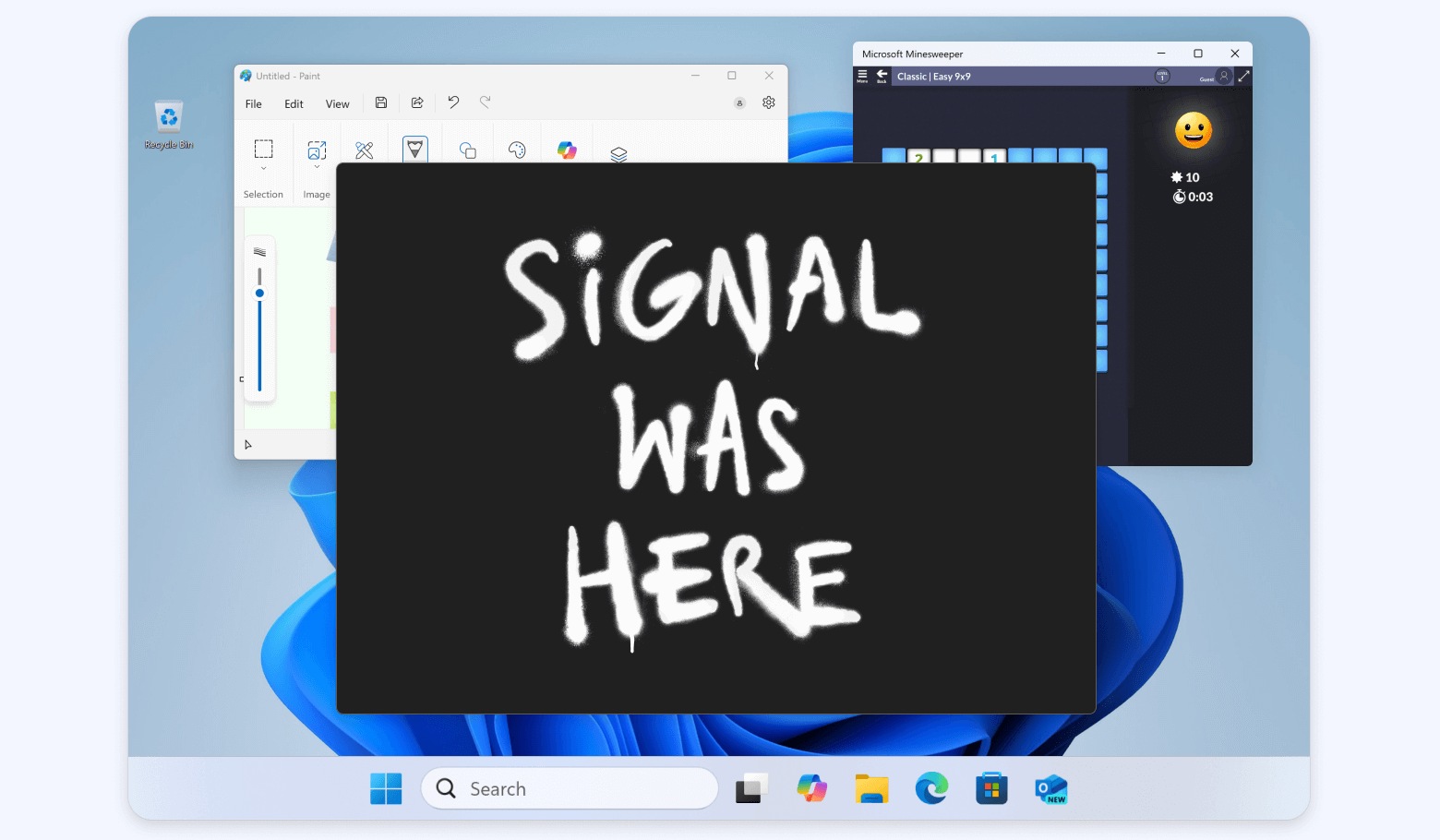Signal Fights Windows Recall with a DRM Trick
In a move that highlights the lengths to which signal can go to protect user privacy, the popular messaging app has quietly implemented a new safeguard in its Windows desktop application. Gone are the days of capturing screenshots that include the Signal app window – users on Windows will now see a black box where Signal once resided.
This innovative measure is a response to Microsoft's controversial Recall feature, which automatically captures screenshots of a user's screen every few seconds in the background. While designed to help users recover forgotten actions or retrace their steps with the aid of Windows' Copilot AI, Recall has raised major red flags for privacy-first platforms like Signal.
Microsoft's lack of an opt-out mechanism for developers means that signal had no choice but to take matters into its own hands. And so, they turned to a feature originally built to serve Hollywood: "DRM mode".
This mechanism lets an app tell Windows that its content is copyright-protected and should be shielded from screen captures – a measure meant to prevent pirating movies from streaming platforms.
Signal has cleverly repurposed this system to cloak its chats, technically telling Windows that its content is protected by copyright. It's a clever hack, and one that reflects just how seriously signal takes its users' privacy – even if it means bending a rule meant for movie studios.
The fact that this safeguard only applies to the Windows desktop application highlights the nuanced relationship between Signal and Microsoft. While Microsoft has made efforts to include more security features in their products, they have also faced criticism for prioritizing user data over user control.
As users of signal continue to prioritize their online privacy, it's clear that the app is willing to take bold steps to protect them. Whether you're a journalist or just an individual concerned about your digital footprint, it's worth taking a closer look at what Signal has to say about its new safeguard – and how it reflects the company's commitment to user privacy.
